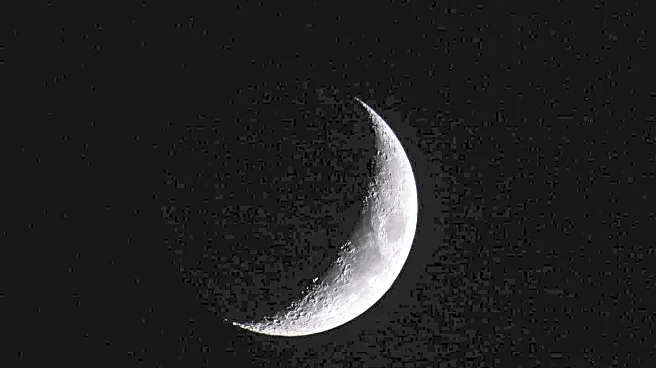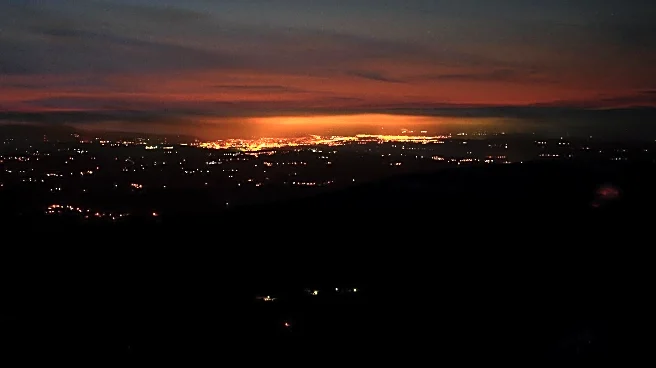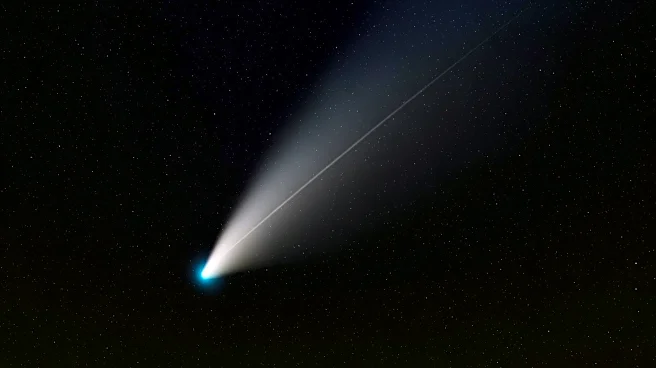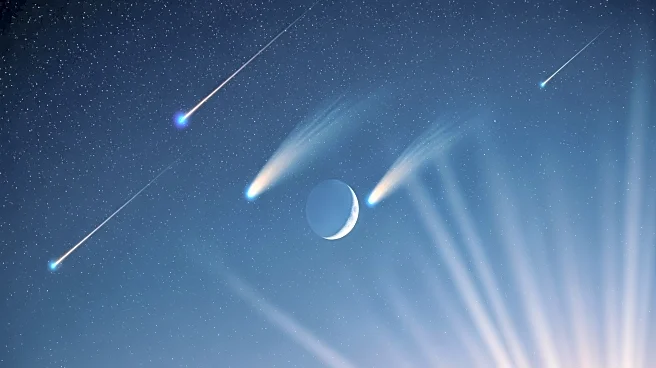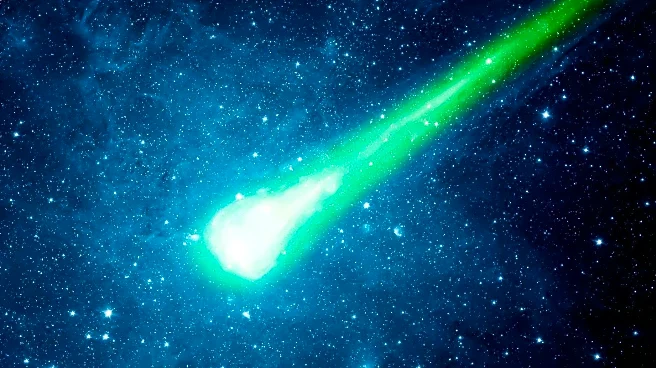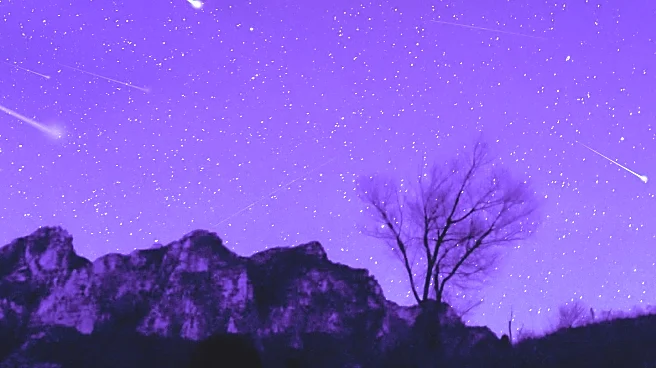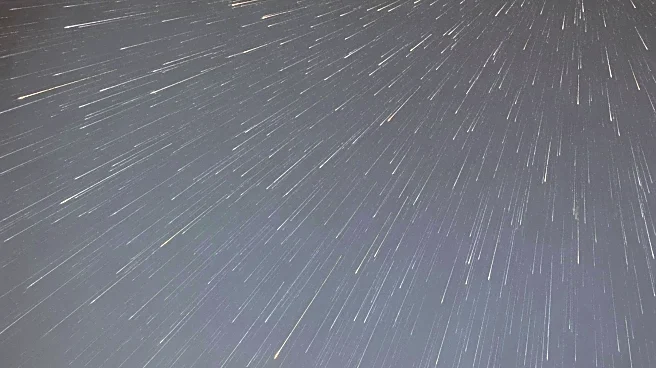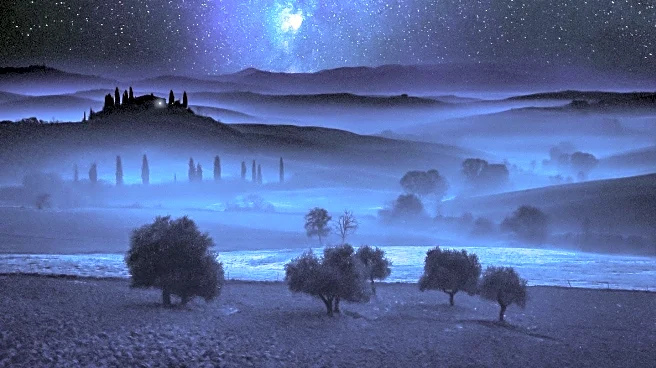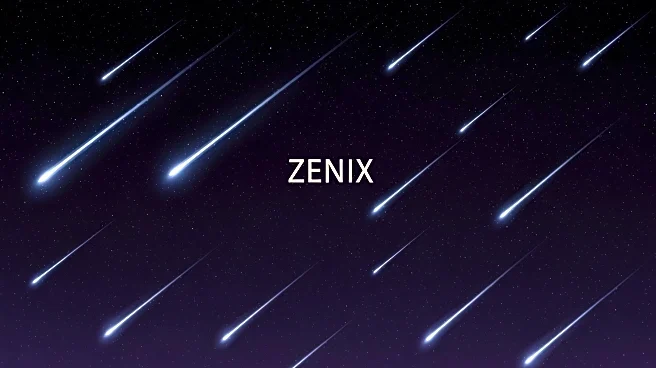What's Happening?
On October 23, skywatchers will have the opportunity to observe a rare celestial alignment involving the crescent moon, Mars, and Mercury. As the sun sets, the 6%-lit waxing crescent moon will appear approximately
5 degrees above the southwestern horizon. Mercury will be visible as an 'evening star' to the upper right of the moon, while Mars will shine just beyond, creating a cosmic lineup. The three celestial bodies will be within 10 degrees of each other, allowing them to be viewed together through binoculars. Observers are advised to ensure the sun is completely below the horizon before using magnifying aids to avoid eye damage.
Why It's Important?
This alignment provides a unique opportunity for amateur astronomers and sky enthusiasts to observe three celestial bodies in close proximity. Such events can spark interest in astronomy and encourage people to learn more about the night sky. The visibility of Mercury, which is often difficult to spot due to its proximity to the sun, adds to the significance of this event. Additionally, the alignment serves as a reminder of the dynamic nature of our solar system and the constant movement of its planets.
What's Next?
Following this event, Mercury will continue its orbit around the sun, moving towards the constellation Scorpius. The crescent moon will grow thicker, reaching its first quarter phase on October 29. Skywatchers are encouraged to continue observing the night sky as these celestial bodies change positions. For those interested in further exploration, investing in telescopes or binoculars can enhance the stargazing experience, and smartphone astronomy apps can assist in navigating the night sky.
Beyond the Headlines
This celestial event highlights the importance of preserving dark skies for astronomical observations. Light pollution can significantly hinder the ability to view such alignments, emphasizing the need for initiatives that protect night skies from excessive artificial lighting. Additionally, events like this can foster a sense of wonder and curiosity about the universe, potentially inspiring future generations to pursue careers in astronomy and space exploration.
